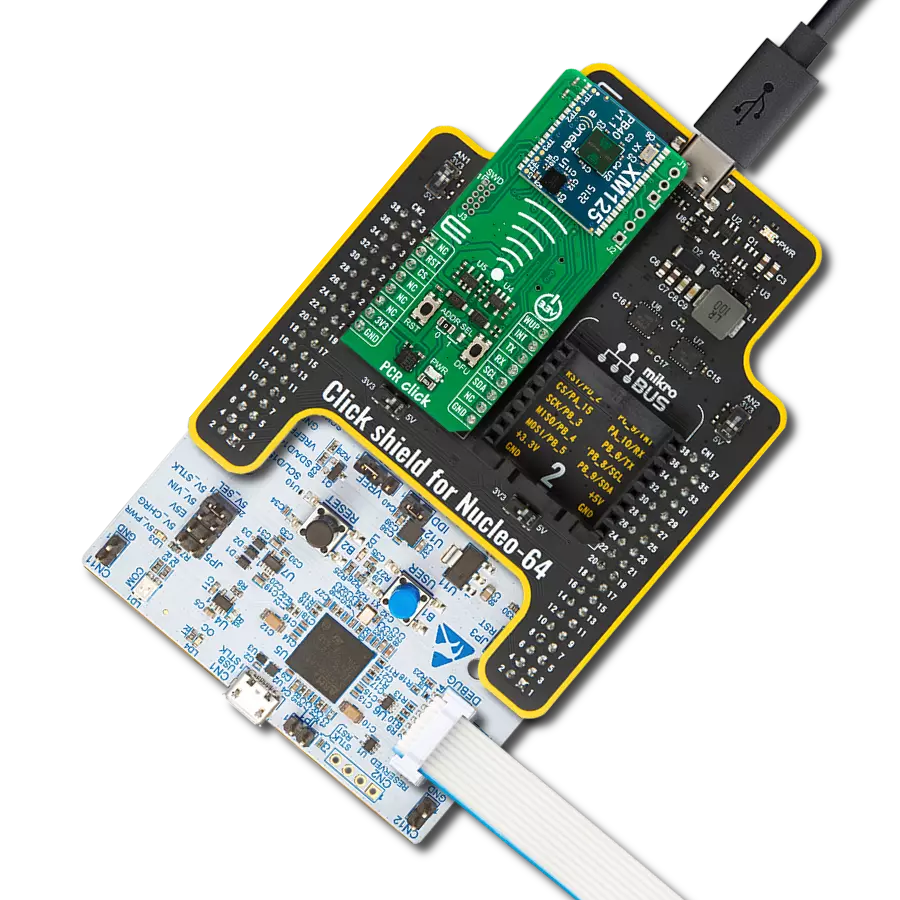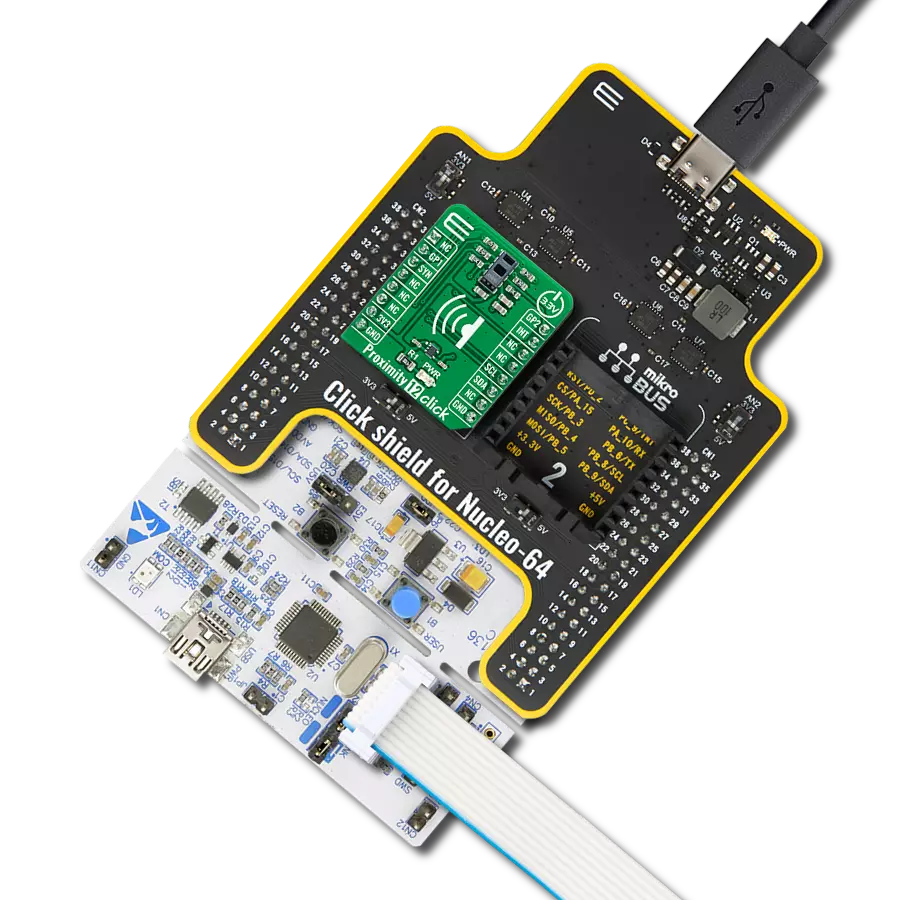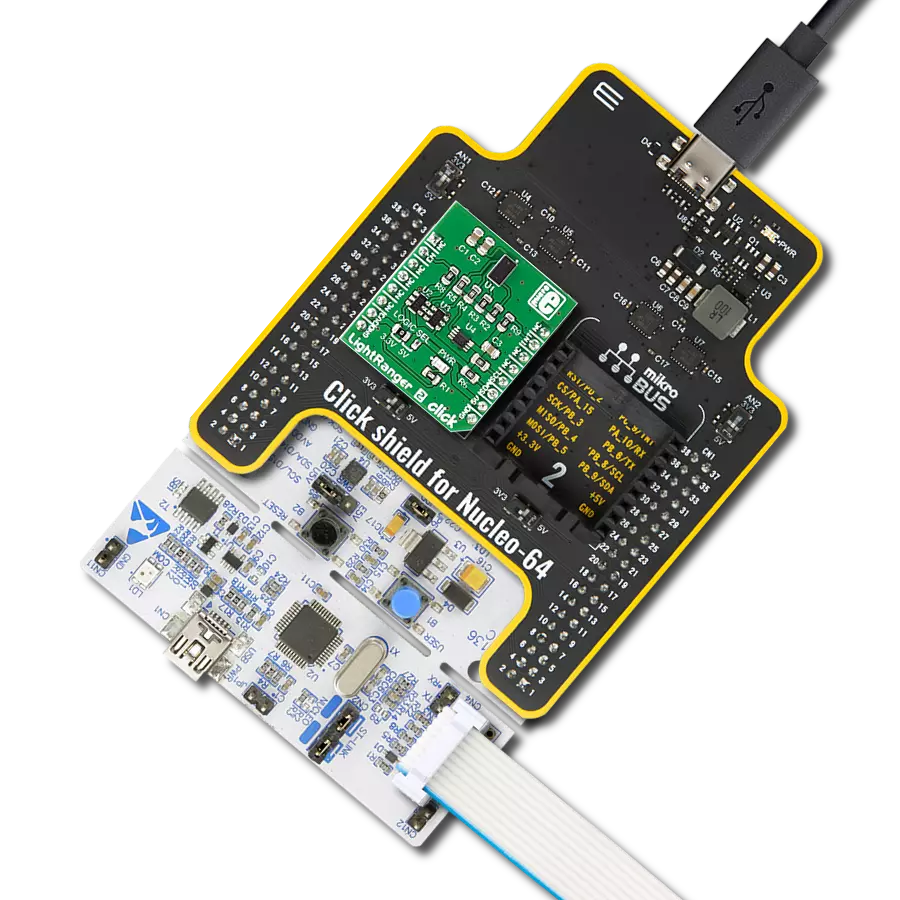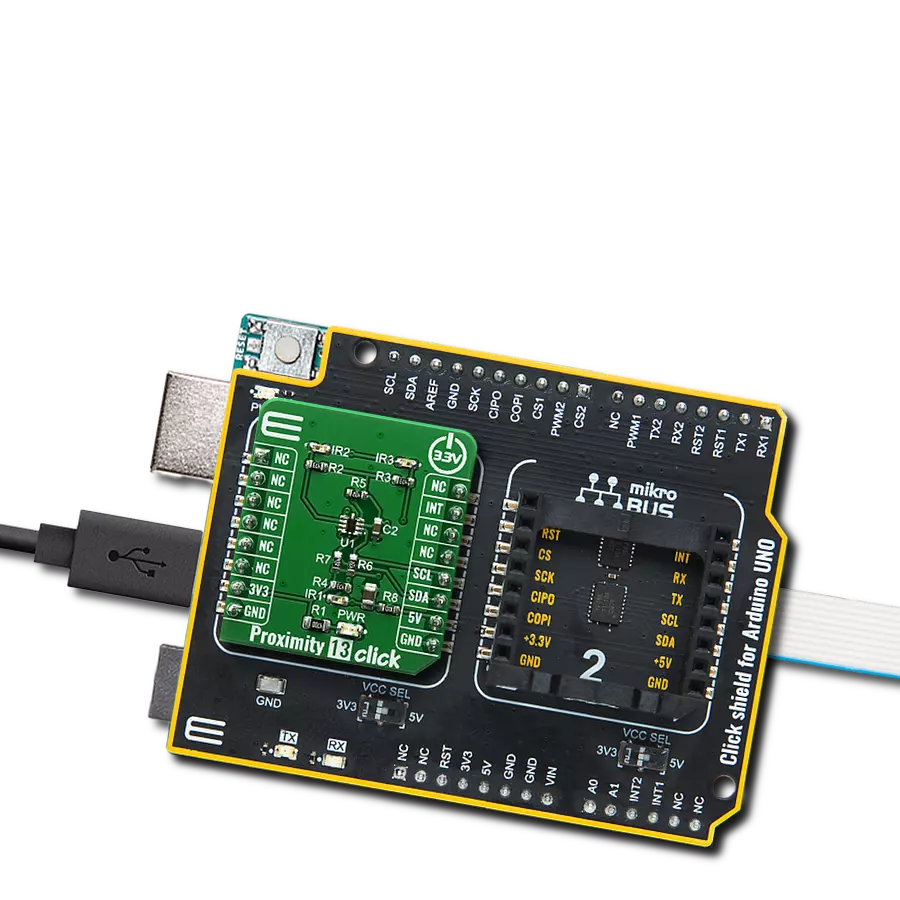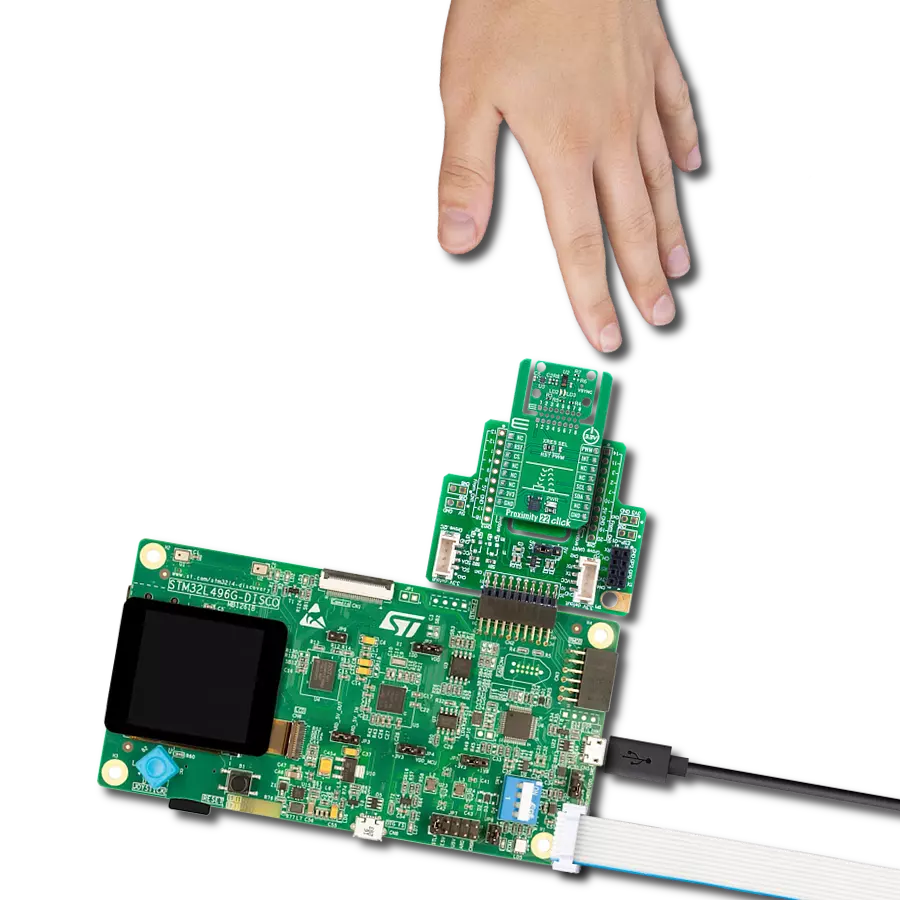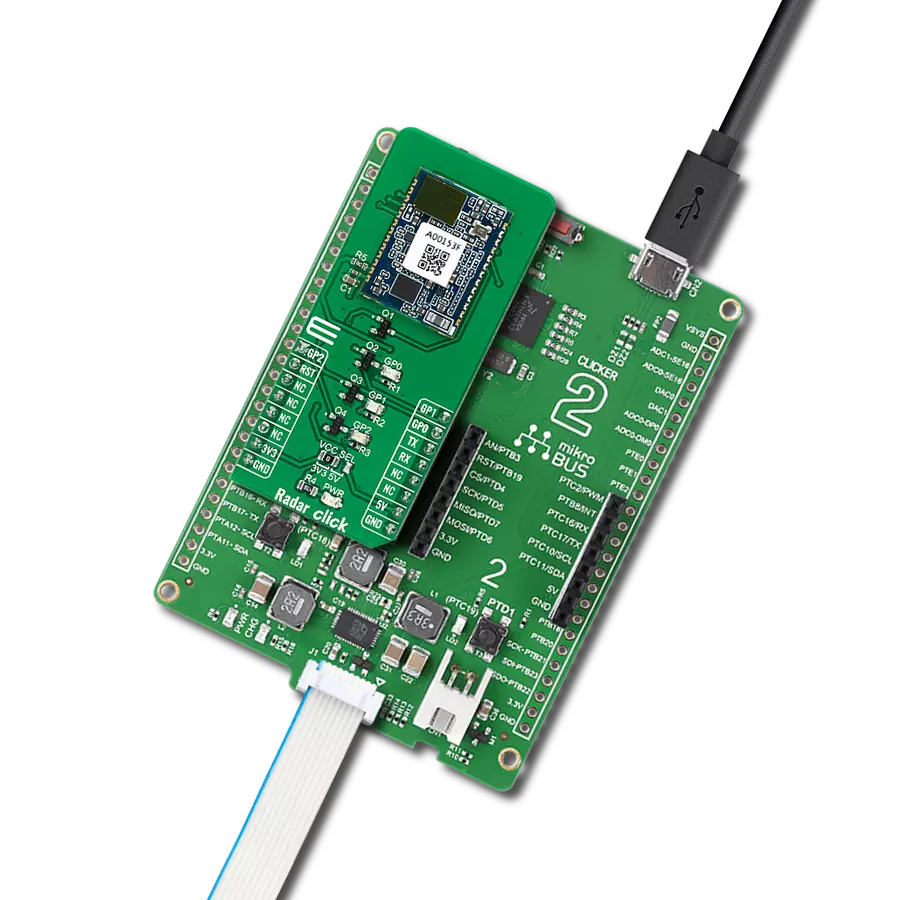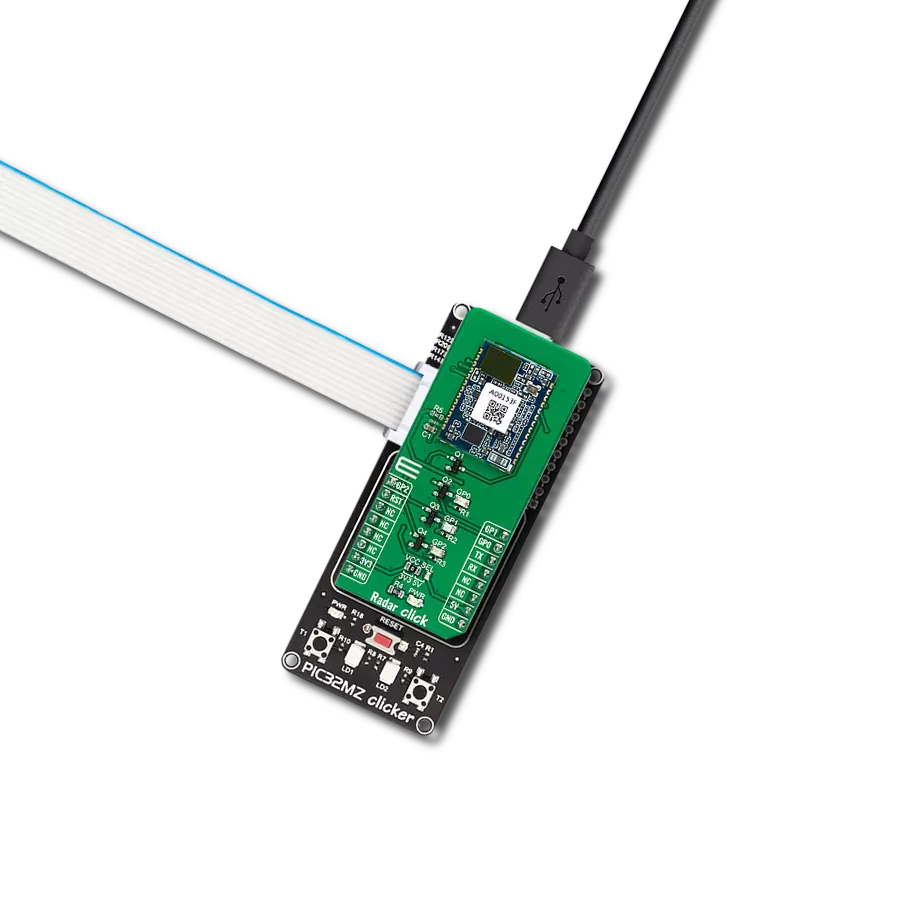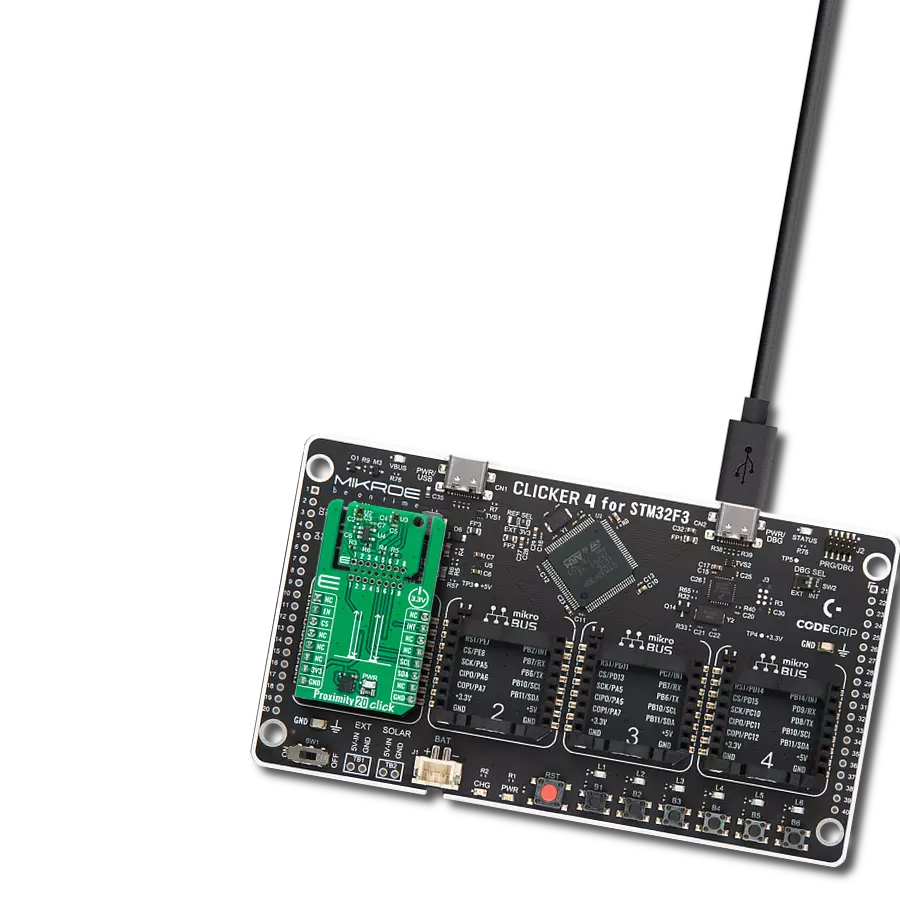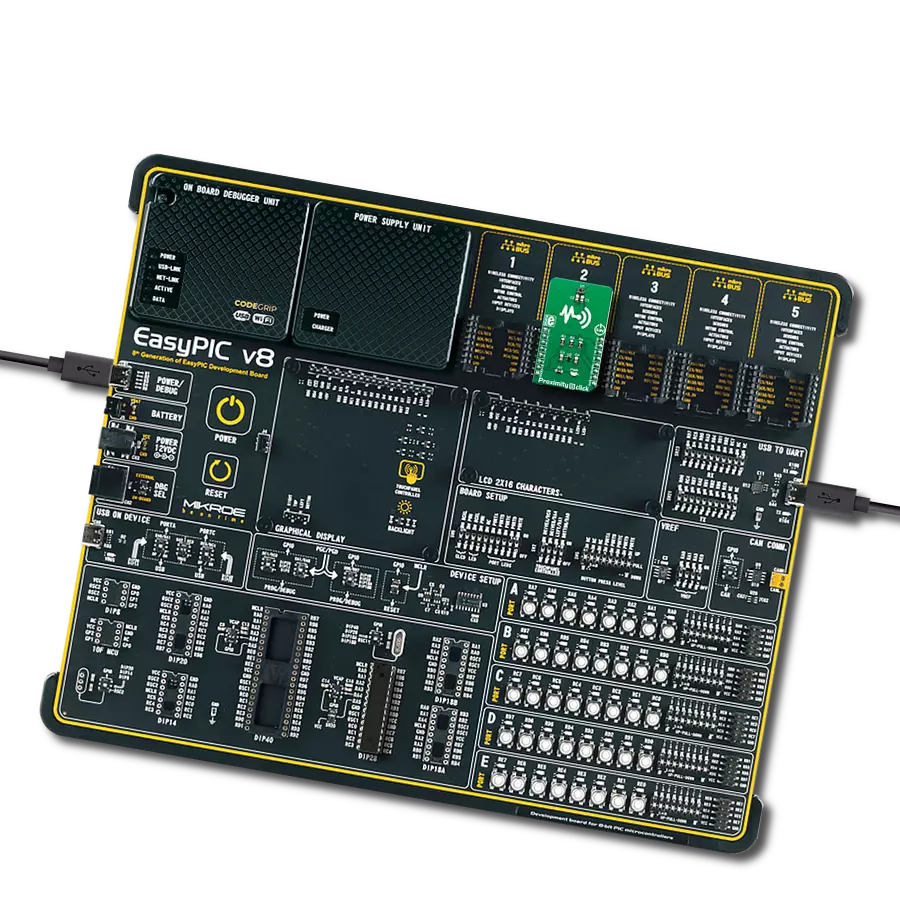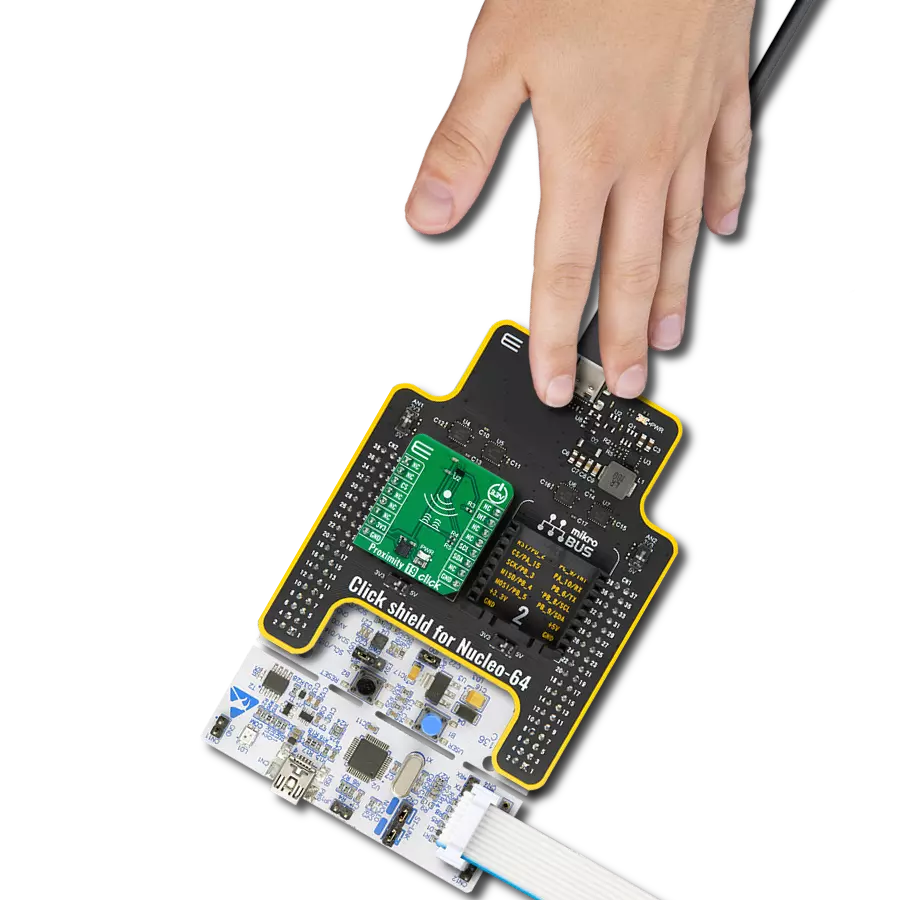Our purpose is to empower individuals and industries with proximity technology that enhances convenience, safety, and efficiency
A
A
Hardware Overview
How does it work?
Proximity 15 Click is based on the VL53L1, a third-generation time-of-flight (ToF) laser-ranging sensor from STMicroelectronics. The VL53L1 brings multi-object detection and multi-array scanning, doubling the range of operation to above 4m. It also allows novel features such as multi-target detection and programmable multi-zone scanning, suitable for robotics, user detection, drones, IoT, and wearable applications. The sensor module integrates a VCSEL that emits at a wavelength of 940nm, a processor core, and a SPAD photon detector. The addition of the optical lens system increases the photon detection rate to
boost the module’s ranging performance. The VL53L1 performs an entire measurement operation in as little as 5ms, and for Auto-Focus applications, the sensor detects objects twice. Proximity 15 Click communicates with MCU using the standard I2C 2-Wire interface to read data and configure settings, supporting Fast Mode Plus Mode up to 1MHz. It also features an intelligent interrupt function that generates every time a ranging measurement is available. The interrupt is cleared once the host reads the result, and the ranging sequence can repeat. Besides the interrupt pin, the Xshutdown (reset) pin labeled as XSH and
routed to the CS pin of the mikroBUS™ socket optimizes power consumption used for power ON/OFF purposes. This option optimizes power consumption as the VL53L1 can be completely powered off when unused and then woken up through the host GPIO (using the XSH pin). This Click board™ can be operated only with a 3.3V logic voltage level. The board must perform appropriate logic voltage level conversion before using MCUs with different logic levels. Also, it comes equipped with a library containing functions and an example code that can be used as a reference for further development.
Features overview
Development board
Curiosity PIC32 MZ EF development board is a fully integrated 32-bit development platform featuring the high-performance PIC32MZ EF Series (PIC32MZ2048EFM) that has a 2MB Flash, 512KB RAM, integrated FPU, Crypto accelerator, and excellent connectivity options. It includes an integrated programmer and debugger, requiring no additional hardware. Users can expand
functionality through MIKROE mikroBUS™ Click™ adapter boards, add Ethernet connectivity with the Microchip PHY daughter board, add WiFi connectivity capability using the Microchip expansions boards, and add audio input and output capability with Microchip audio daughter boards. These boards are fully integrated into PIC32’s powerful software framework, MPLAB Harmony,
which provides a flexible and modular interface to application development a rich set of inter-operable software stacks (TCP-IP, USB), and easy-to-use features. The Curiosity PIC32 MZ EF development board offers expansion capabilities making it an excellent choice for a rapid prototyping board in Connectivity, IOT, and general-purpose applications.
Microcontroller Overview
MCU Card / MCU
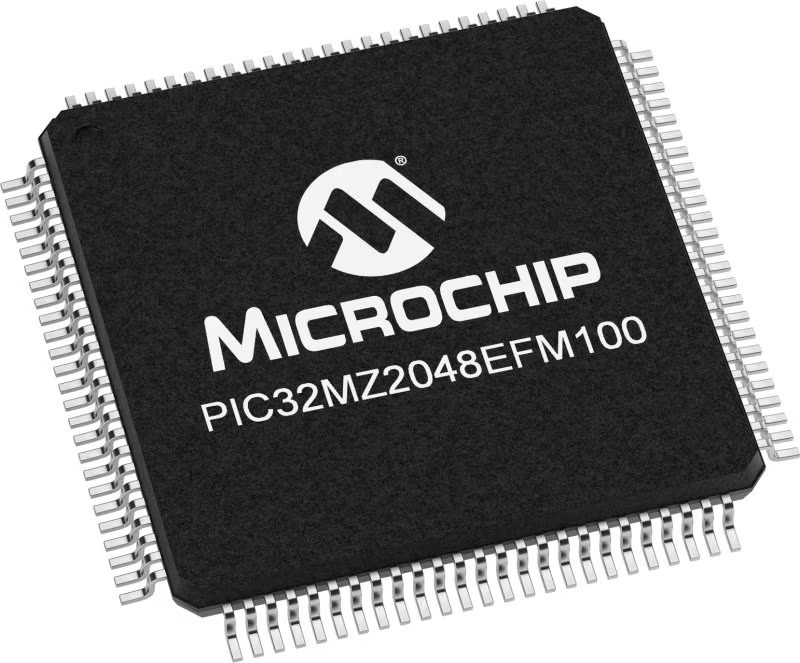
Architecture
PIC32
MCU Memory (KB)
2048
Silicon Vendor
Microchip
Pin count
100
RAM (Bytes)
524288
Used MCU Pins
mikroBUS™ mapper
Take a closer look
Click board™ Schematic

Step by step
Project assembly
Software Support
Library Description
This library contains API for Proximity 15 Click driver.
Key functions:
proximity15_get_distance- This function waits for the data ready, then reads the distance measured by the sensor in milimeters and clears interrupts.proximity15_set_inter_measurement_period- This function programs the inter measurement period in miliseconds.proximity15_set_timing_budget- This function programs the timing budget in miliseconds.
Open Source
Code example
The complete application code and a ready-to-use project are available through the NECTO Studio Package Manager for direct installation in the NECTO Studio. The application code can also be found on the MIKROE GitHub account.
/*!
* @file main.c
* @brief Proximity15 Click example
*
* # Description
* This example demonstrates the use of Proximity 15 Click board.
*
* The demo application is composed of two sections :
*
* ## Application Init
* Initializes the driver and performs the Click default configuration which
* enables the sensor and sets it to long distance mode with 50ms timing budget and 100ms
* inter measurement periods.
*
* ## Application Task
* Reads the distance measured by the sensor in milimeters and displays the
* value on the USB UART approximately every 100ms.
*
* @note
* In order to measure longer distance, increase the timing budget and inter measurement periods.
*
* @author Stefan Filipovic
*
*/
#include "board.h"
#include "log.h"
#include "proximity15.h"
static proximity15_t proximity15;
static log_t logger;
void application_init ( void )
{
log_cfg_t log_cfg; /**< Logger config object. */
proximity15_cfg_t proximity15_cfg; /**< Click config object. */
/**
* Logger initialization.
* Default baud rate: 115200
* Default log level: LOG_LEVEL_DEBUG
* @note If USB_UART_RX and USB_UART_TX
* are defined as HAL_PIN_NC, you will
* need to define them manually for log to work.
* See @b LOG_MAP_USB_UART macro definition for detailed explanation.
*/
LOG_MAP_USB_UART( log_cfg );
log_init( &logger, &log_cfg );
log_info( &logger, " Application Init " );
// Click initialization.
proximity15_cfg_setup( &proximity15_cfg );
PROXIMITY15_MAP_MIKROBUS( proximity15_cfg, MIKROBUS_1 );
err_t init_flag = proximity15_init( &proximity15, &proximity15_cfg );
if ( I2C_MASTER_ERROR == init_flag )
{
log_error( &logger, " Application Init Error. " );
log_info( &logger, " Please, run program again... " );
for ( ; ; );
}
init_flag = proximity15_default_cfg ( &proximity15 );
if ( PROXIMITY15_ERROR == init_flag )
{
log_error( &logger, " Default Config Error. " );
log_info( &logger, " Please, run program again... " );
for ( ; ; );
}
log_info( &logger, " Application Task " );
}
void application_task ( void )
{
uint16_t distance = 0;
if ( PROXIMITY15_OK == proximity15_get_distance ( &proximity15, &distance ) )
{
log_printf( &logger, " Distance(mm): %u\r\n\n", distance );
}
}
int main ( void )
{
/* Do not remove this line or clock might not be set correctly. */
#ifdef PREINIT_SUPPORTED
preinit();
#endif
application_init( );
for ( ; ; )
{
application_task( );
}
return 0;
}
// ------------------------------------------------------------------------ END
Additional Support
Resources
Category:Proximity


















